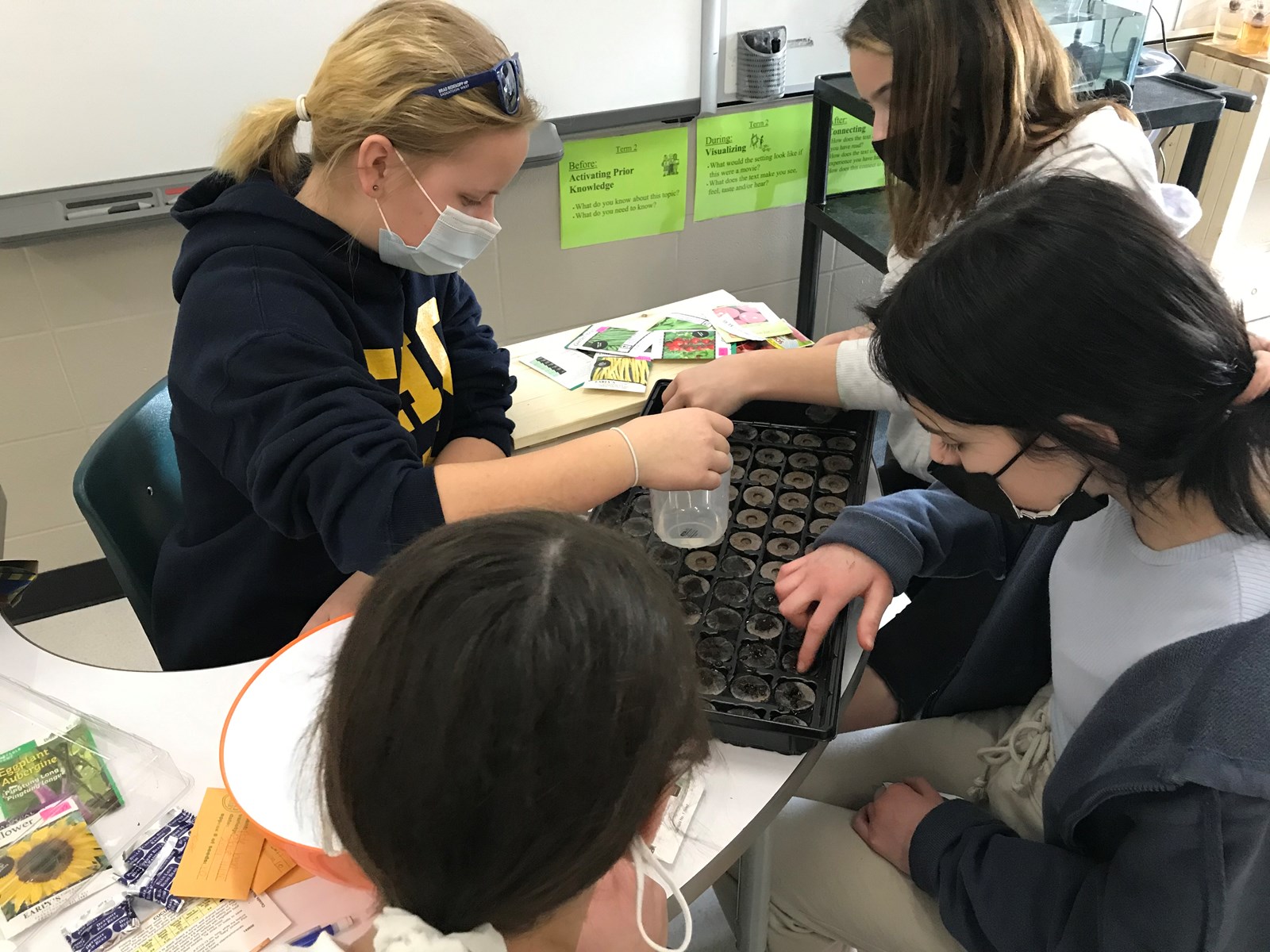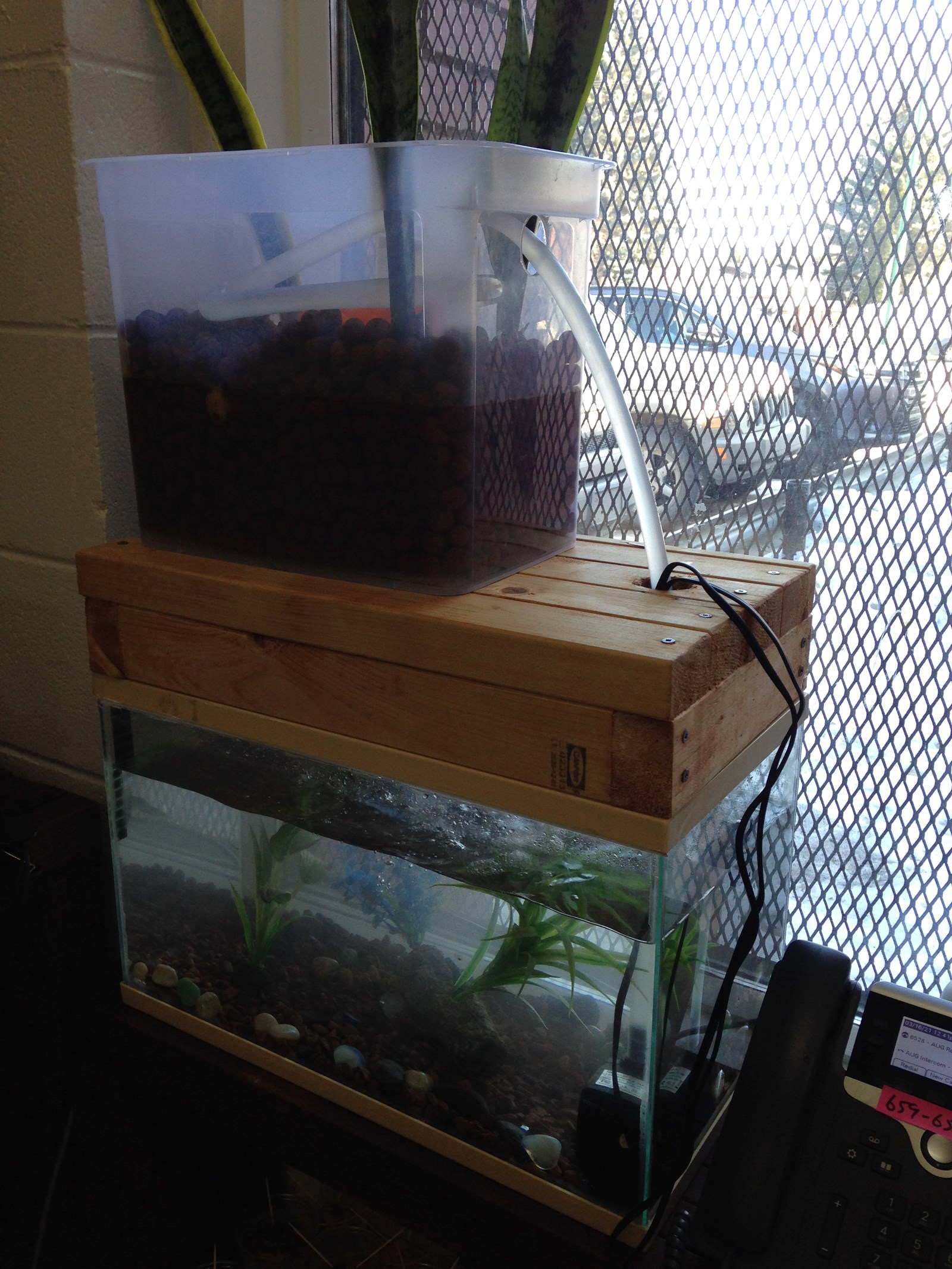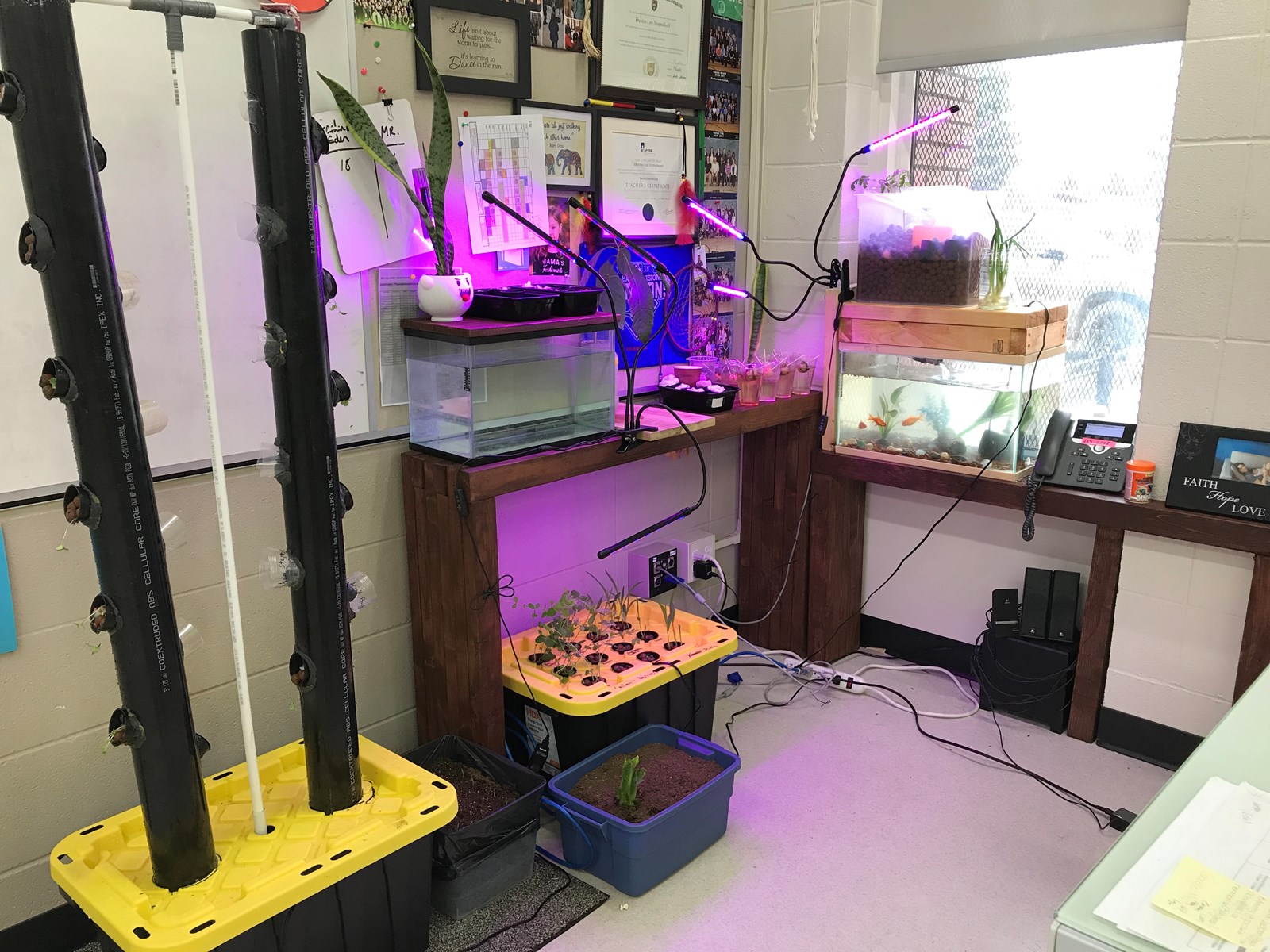Testing sustainable agricultural practices

The Grade 8 classroom at St. Augustine School took part in the Student Action for Sustainable Future program with a specific focus on water consumption, Indigenous Connections, and bringing the natural environment into our classrooms.
Groups of students used and monitored different growing methods to determine which would be most effective in terms of 1) producing harvestable foods, and 2) which consumed the least amount of water. Students weighed these learning points against a set of pros and cons for each project to see if they were worthwhile projects to tackle in terms of sustainability.
Each group also had their own set of curriculum connections many of which were related to Math (surface area, volume, measurement), Health (sustainable practices that support healthy behaviours, action planning), Social Studies and Science (environmental and Indigenous cultural connections).
Our Findings

The aeroponics project (contained within the heavy-duty storage tote) was the most efficient in terms of water consumption (averaging only 2.36 liquid cups of water per day over a 45 day span). Students were able to harvest smaller greens through this grow method very effectively as well. Students turned their greens into breakfast sandwiches and other unique edible items at home.
Our traditional soil garden was the second most efficient project averaging 4.95 cups per day over the same 45 day span. However, this was also our most effective grow method for larger items such as tomatoes, beans, and peas.

 aquaponics fish tank
aquaponics fish tank
The aquaponics fish tank was by far the neatest and most challenging project to put together. Bringing in the fish added a unique element to it. We connected this learning to Indigenous learning about the importance of the symbol of the cirlce and the harmonious relationship we have with our environment (specifically the mutually beneficial relationship between the fish and the plants in this system). It averaged 6.29 cups per day.
The hydroponics tower was our least effective because we could not solve a constant water leak in the spaces our plants were growing. After running for only two weeks and trying to problem solve many different ways, we calculated a 16.71 cups per day. This was our only project that we determined to be not beneficial in terms of sustainability because of the amount of work invested against the amount of what was produced. 
To follow up this amazing opportunity, students are now caring for their gardens throuhgout the remainder of the year and we are now seeing some of the vegetables coming through and our gardens are producing beuatifully. In consultation with Rhonda Smallchild, our Indigenous Coordinator, we will be following up our environmental work by visiting Eagle Creek in the future to build upon our learning and make further connections with Indigenous land-based learning.
Thanks to Gr. 8 teacher Mr. Stupnikoff for writing about the classroom project.

